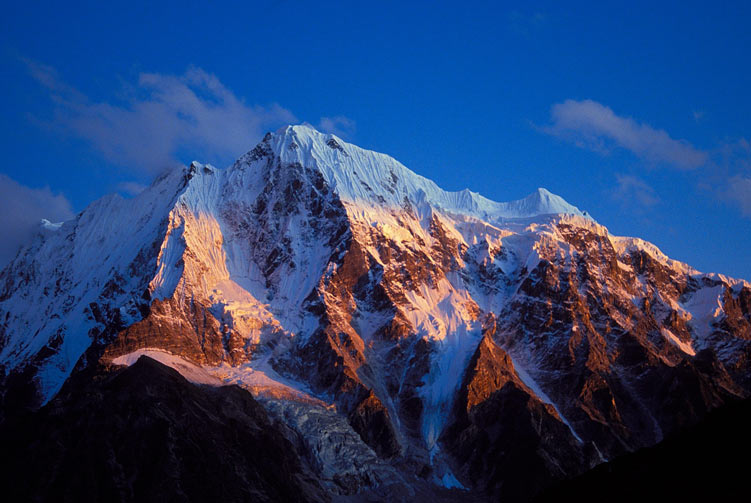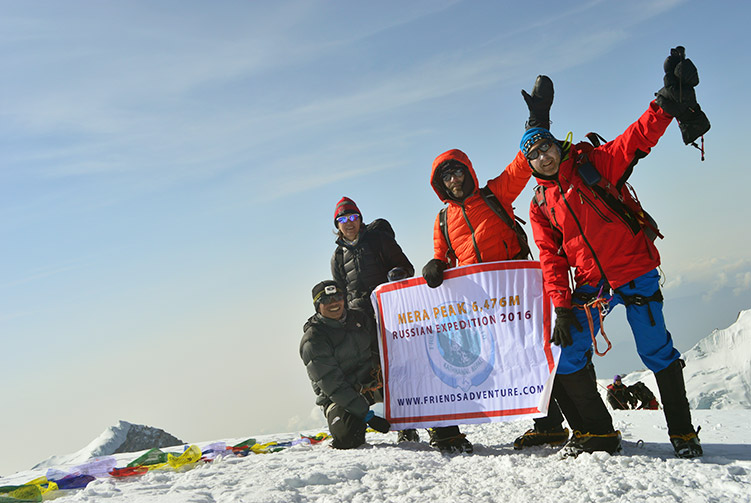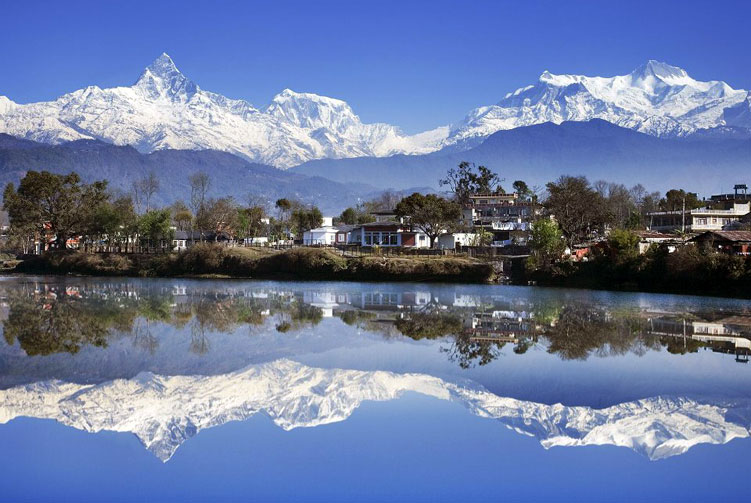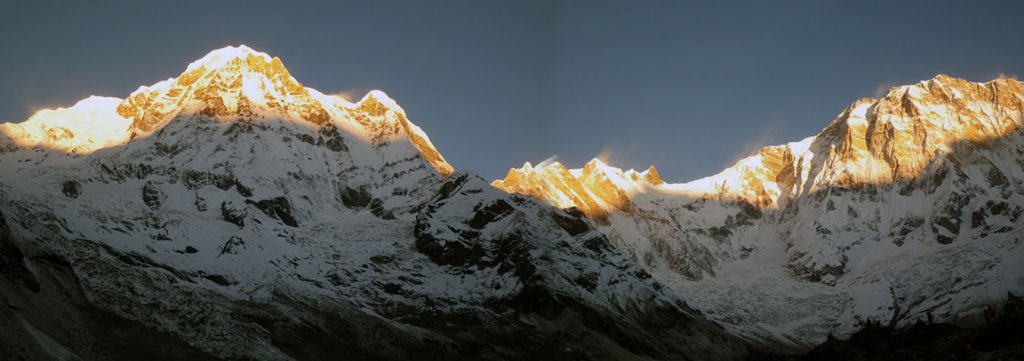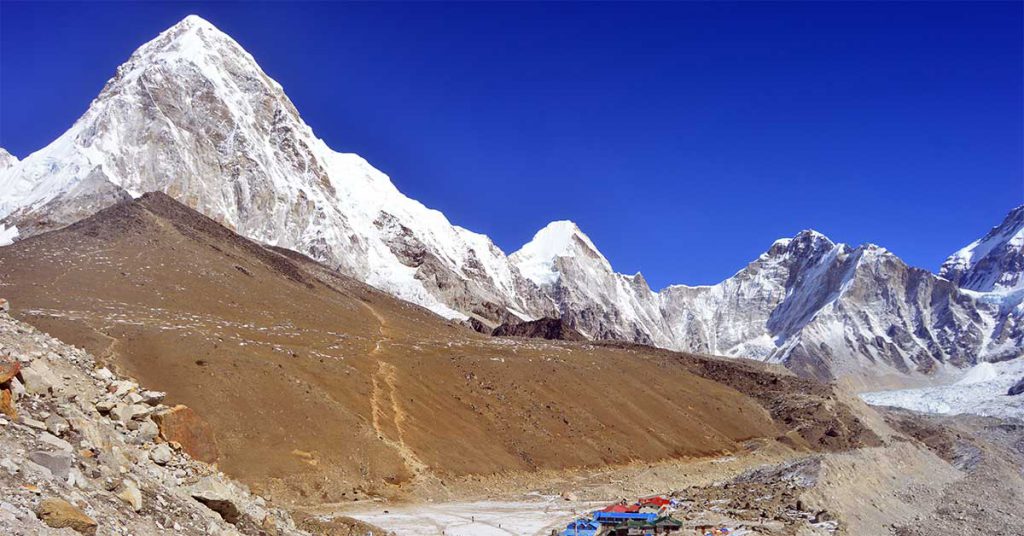This is usually climbed from the north and combined with a crossing of the Tashi Labtsa. The approach from the Rolwaling is long, involves crossing a steep pass to even get to base camp and is crevassed but otherwise on the peak it isn’t steep.
Overview
Pachhermo peak is an eye-catching snow peak lying south of Tashi Lapcha pass in Rolwaling region. The peak was first ascended in 1955. The face of northwest ridge appearances a uniform slope broken by crevasse and series rising from the rocky lower buttresses above the Drolambau glaciers in the west.
Trip Highlights
- Cultural Sightseeing tour of Kathmandu
- The journey to Pharchamo Peak trekking through beautiful landscapes, rhododendron forests, and traditional villages.
- You'll be surrounded by stunning Himalayan landscapes, with breathtaking views of nearby peaks and glaciers.
- Pharchamo Peak stands at over 17,000 feet (6,279m.), providing an exhilarating high-altitude experience.
Itinerary
Today is the day of your arrival in Kathmandu, Nepal. As soon as you come out of the Kathmandu airport, you will find our representative waiting for you in the waiting area right outside the arrival lounge. You will be warmly greeted and welcomed by the representative and led to the vehicle. Our vehicle will take you to the trip hotel, most of the time in Thamel, that is 20-30 minutes drive, depending upon traffic, from the airport.
Enjoy your breakfast at the hotel. We come to take your for a wonderful cultural heritage tour of Kathmandu valley. As part of the tour, we are going to visit four of the UNESCO Heritage monuments in Kathmandu valley. The places we visit today are incredible mixture of culture, history, spirituality, art and stories. Overnight in Hotel.
Swoyambhunath
Believed to have been created on its own, this Budhhist stupa is the oldest of all the monuments in Kathmandu valley. Standing atop a small hillock, Swoyambunath, known as monkey temple amongst tourists, provides a fascinating view of the valley, surrounding hills and snow-capped mountain at the distance on a clear day.
Patan Durbar Square
One of the three medieval palace squares, Patan Durbar Square holds its medieval art and architectural grandeur. Amazing skill of the artisans is evident in each and every building that stands in the square. The square comprises of medieval palace, temples and museum.
Pashupatinath
This site is the most sacred Hindu temple area in the country. But, as the temple is strictly a Hindu only area, non-Hindu tourists go there to watch the unique Hindu cremation rituals on the bank of River Bagmati. The death rites of Hindu family there are so engrossing and heart-touching which make you feel the moment. It’s not any kind of intrusion in being there and watching somebody being cremated in an open ground. It’s a great cultural experience.
Boudhanath
This giant Buddhist stupa is considered as the biggest one in the world. This small square with giant shrine has a powerful presence of the spiritual vibrations. It’s an important pilgrimage site for the people following Tibetan Buddhism.
You’ll leave Kathmandu and start your journey by road to Gongar, which is at an elevation of 1,440 meters. Once you reach Gongar, you’ll be taken to a Teahouse Lodge where you’ll spend the night.
The trek begins. You’ll walk from Gongar to Simigaon, which is at an altitude of 2,019 meters.
Continuing your trek, you’ll move from Simigaon to Dugang, which is at an elevation of 2,800 meters. Each step brings you deeper into the beautiful Himalayan landscape.
Your trek takes you to Beding, which is situated at an altitude of 3,693 meters. The terrain starts to become more challenging as you climb.
Continuing your trek, you’ll reach Na Gaun, where you’ll have the chance to explore the village and engage with the locals, gaining insights into the local culture. Your overnight stay will be in Na Gaun.
An exciting day awaits as you explore the glacier and lake near Na Gaun. This provides an opportunity to fully appreciate the natural wonders of the area, surrounded by pristine beauty. You’ll return to Na Gaun for your overnight stay.
Today, you’ll trek to the Tsho Rolpa Lake Glacier Camp, reaching an altitude of 4,735 meters. You’re now in a high-altitude environment.
You’ll hike to Tashi Lapcha Pass at 5,793 meters and then to Cave Camp. This part of the journey is challenging due to the high altitude.
Your team will set up a high camp at 5,800 meters in preparation for the ascent of Pharchamo Peak.
Summit day! You’ll climb Pharchamo Peak, which stands at 6,279 meters, and then descend to the Cave Camp.
This day is reserved in case of bad weather or unforeseen circumstances, providing flexibility in the expedition schedule.
You’ll trek from the Cave Camp to Thengpo Village, situated at an elevation of 3,990 meters. Accommodation will be in tents.
You’ll continue your journey from Thengpo to Namche Bazaar at an altitude of 3,440 meters. You’ll stay in a Teahouse Lodge.
The final day of this trek is eventually here today. We walk back to Lukla via Monjo and Phakding along the Dudh Koshi River. A round trip on the Everest Base Camp trail comes to end here. We celebrate the end of the trekking part of the journey and thank our wonderfully amazing supporting crew members for their service and effort to take us to the base camp and back safely. Overnight at a lodge.
We get ready for the flight back to Kathmandu. We board the plane at Lukla airstrip and fly back to Kathmandu. Once we land in Kathmandu airport, we go to hotel and spend the whole day at leisure on our own. Finding relieving massage, good food, souvenir shopping, and wandering around can keep you busy for the day.
A farewell dinner is scheduled for this evening. We will let you know the departure time for dinner once we reach Kathmandu.
This is an additional day in the itinerary to compensate any possible delays on the trekking or cancellation of the flights. We extremely recommend that you have at least 2 extra days after the itinerary days so to maintain any possible delays or cancellation of the flight. If everything goes without any problem, you can utilize those extra days doing some other activities.
Your Ramdungo Peak Climbing Expedition comes to an end today, and it’s time for your final departure. Whether you’re heading back home or continuing your journey, you’ll carry the memories of your remarkable expedition with you.
The Trip Cost Includes
- Welcome/Farewell dinner with cultural program as listed in the itinerary.
- Airport Pick and Drop in Kathmandu by Private vehicle.
- Tourist Standard Hotel Accommodation in Kathmandu in B/B basis.
- Half day guided city tour with world heritage entrance permit as listed in itinerary.
- Private transportation to and from the starting and ending points of the trek.
- Standard Lodge/Guest House accommodation (best available) with twin sharing basis during the trek.
- Accommodation in Tented Camp while on Island Peak Base Camp.
- Full Board Meals (3 Meals a day) while on the trek.
- Island Peak Climbing permits and TIMS Card fees.
- All necessary camping equipments; Tent, Table & Chair for climbing expedition's crew's.
- Professional & highly expertise government licensed holder local Trekking/Climbing Guide.
- 2:1 Ratio porter carrying 30KG.
- All expenses of the staffs (Guides/Porters) that includes Food, Accommodation, Salary, Insurance, Equipment during your travel period.
- All the necessary trekking gear for porters like jacket /trousers, trekking shoes, gloves, shocks, sunglasses etc.
- Friends Adventure Team's Sleeping Bag, Down Jacket, Walking Poles and Duffel Bag, to be return after trip completed.
- Comprehensive First Aid Kit.
- Arrangement of all rescue and evacuation promptly, in Worst Condition
- Island Peak Climbing group climbing gear, climbing rope, snow bars & carabineers etc.
- Trekking Map, Friends Adventure Team's special Souvenir.
- Agency service charge.
The Trip Cost Excludes
- Meals in Kathmandu and Pokhara
- Any packed food/snacks, aerated drinks, energy drinks, mineral water, alcohol, cigarettes, chocolates, nutria-bars.
- All desserts, sweet things like chocolate, cake, pie, pudding.
- Items of personal nature, Laundry Expenses, Tips.
- Clothing, Packing Items or Bags, Personal Medical Kit, Personal Trekking Gears.
- Any additional staff other than specified.
- Medical and Travel Insurance and Emergency rescue by any means of Transportation including Helicopter evacuation if required.
- Rescue, Repatriation, Medicines, Medical Tests and Hospitalization expenses.
- Airfare of international flights.
- Nepal entry visa fee (Visa issuance is easy at the arrival).
- Hot shower and battery charging on the tea houses.
- Any other item not included in "Cost Includes" Section.
Frequently asked Questions
Pharchamo Peak Climbing involves reaching the summit of Pharchamo Peak, a popular mountain in the Langtang Region of Nepal.
No, it’s not recommended for beginners. You should have prior trekking and some basic climbing experience.
The best times are spring (April to May) and autumn (September to November) when the weather is most favorable.
Yes, you should get training in essential climbing skills like using ropes and ice axes.
You can rent some equipment locally, but it’s best to bring your personal gear, especially items like well-fitting boots and clothing.
While there are no strict age limits, climbers are generally expected to be in good physical condition. It’s more about fitness than age.
Altitude sickness can occur at high altitudes and can be dangerous. Proper acclimatization, staying hydrated, and following your guide’s advice can help prevent it.
You’ll stay in tea houses or lodges during the trekking portion and eat locally available food. At higher altitudes, the options may be limited.
Yes, travel insurance that covers emergency evacuation and medical expenses is essential. Check that it also covers high-altitude activities.
Prioritize cardiovascular fitness, strength training, and endurance exercises. Hiking and trekking in your local area can also help prepare you for the altitude.
The cost can vary depending on the tour operator, the services included, and the duration of the expedition. On average, it can range from a few thousand to several thousand dollars.
Yes, many travelers choose to explore other parts of Nepal, like Kathmandu, Pokhara, or go on other trekking adventures after their peak climbing expedition.
Respect local customs, avoid littering, and use designated trails. Hiring local guides and porters also supports the local economy.
On average, you walk about 4 to 6 hours per day. One or two days can be as less as 3hrs and one or two days can be as long as 7hrs.
Yes, you can charge batteries en route. Charger should be brought. There are hot shower facilities as well. You may have to pay certain amount for both ($1-$2). Negotiate. Also, hot water facility could be free at lower elevation.
No. There are no ATMs on this trek route. You will have to draw enough cash in Kathmandu. There are a number of ATMs in these cities. Everything is paid in Nepali rupees. So money should be exchanged before the start of the trek.
Yes. Internet can be accessed in most places. Sometimes, there might be some technical problems. Internet in Nepal is not as fast as you are used to and at times you can just lose connection.
No, it’s not strictly necessary to hire a guide or trekking agency for Pharchamo Peak Climbing, but it’s highly advisable, especially if you’re not an experienced mountaineer. Guides and agencies provide essential safety, local knowledge, and logistical support. They help with permits, navigation, and emergency situations, making your climb safer and more enjoyable. While it adds to the cost, the benefits of having a guide or agency often outweigh the expense, particularly for your safety and overall experience.
For Langtang region, pay for guides range from $20 to $30 per day and porters take $15 to $25 per day.


